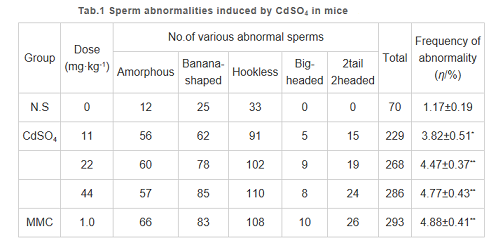GB 31701-2015 “Technical Specifications for the Safety of Textile Products for Infants and Children”, which has been implemented since June 1, 2016, has added restrictions on paraphthalates. So what exactly is this substance? What’s the harm? The editor will learn with you all!
1. What are phthalates (esters)?
Phthalates are a group of chemical compounds that are mainly used in polyvinyl chloride materials to change polyvinyl chloride from hard plastic to elastic plastic and act as plasticizers.
2. The dangers of phthalates (esters)
The latest research from Germany shows that Phthalate, a chemical that is harmful to health, is present in many cosmetics, toys, and food packaging. Research suggests that a global decline in men’s sperm counts over the past few decades may be linked to phthalates, chemicals widely used as softeners in light industry. This substance is widely found in cosmetics, children’s toys, and food packaging. If its content exceeds the standard, it will cause great harm to human health.
Research shows that phthalates play a role similar to estrogen in humans and animals, and can interfere with endocrine, reducing men’s semen volume and sperm count, lowering sperm motility, abnormal sperm morphology, and serious complications. Testicular cancer is the “culprit” causing male reproductive problems. Among cosmetics, nail polish has the highest phthalate content, and many cosmetics also contain these substances in their fragrance ingredients. This substance in cosmetics will enter the body through women’s respiratory system and skin. If used excessively, it will increase the chance of women suffering from breast cancer and will also harm the reproductive system of their future male babies.
3. Where do phthalates (esters) exist?
Phthalates are a class of chemicals that have a softening effect. They are widely used in toys, food packaging materials, various plastic materials, detergents, lubricants, personal care products, etc. This substance can involve The field is very broad.
4. Restriction directives related to phthalates (esters)
Europe
EU Directive 2005/84/EC, which limits the phthalate content in toys and child care articles, came into effect on January 16, 2007. All EU member states have already implemented this by July 16, 2007. This directive will be converted into domestic laws, and their respective relevant laws will be implemented on January 16, 2008.
Restrictions on phthalates under Directive 2005/84/EC:
●The concentration of three types of phthalates (DEHP, DBP and BBP) contained in the plastic of toys or child care products must not exceed 0.1%.
●Toys and child care products with concentrations of DEHP, DBP and BBP exceeding 0.1% shall not be sold in the EU market.
●The concentration of three types of phthalates (DINP, DIDP and DNOP) contained in the plastics of toys and child care products that children can put in their mouths must not exceed 0.1%.
●Toys and child care products with a concentration of DINP, DIDP and DNOP exceeding 0.1% shall not be sold in the EU market.
United States
On August 14, 2008, US President Bush signed the Consumer Product Safety Improvement Act H.R. 4040 into law, setting clear restrictions on phthalates in general consumer products exported to the United States.
China
The GB 31701-2015 “Technical Specifications for Safety of Textile Products for Infants and Children”, which was implemented on June 1, 2016, has added restrictions on phthalates. See the picture below for details:

5. Phthalates (esters)23 harmful substances
▼▲
English name
CAS No
Alias
Chinese name/detection limit
1
Dibutyl phthalate
84-74-2
DBP
Dibutyl phthalate 0.003%
2
Benzylbutyl phthalate
85-68-7
BBP
Benzyl butyl phthalate 0.003%
3
Bis-(2-ethylhexyl) phthalate
117-81-7
DEHP (DOP)
Di(2-ethylhexyl) phthalate 0.003%
4
Diisononyl phthalate
68515-48-0
DINP
Diisononyl phthalate 0.01%
5
Di-n-octyl phthalate
117-84-0
DNOP
Dioctyl phthalate 0.003%
6
Diisodecyl phthalate
26761-40-0
DIDP
Diisodecyl phthalate 0.01%
7
Dimethyl phthalate
131-11-3
DMP
Dimethyl phthalate 0.003%
8
Diethyl phthalate
84-66-2
DEP
Diethyl phthalate 0.003%
9
Diisobutyl phthalate
84-69-5
DIBP
Diisobutyl phthalate 0.003%
10
Dinonyl phthalate
84-76-4
DNP
Dinonyl phthalate 0.003%
11
Diisooctyl phthalate
27554- 26-3
DiOP
Diisooctyl phthalate 0.01%
12
Dipropyl phthalate
131-16- 8
DPrP
Dipropyl phthalate 0.003%
13
Docyclohexyl phthalate
84-61-7
DCHP
Dicyclohexyl phthalate 0.003%
14
Dipentyl phthalate
131-18-0
DPP
Diamyl phthalate 0.003%
15
Dibenzyl phthalate
DBzP
Diphenylmethyl phthalate 0.003%
16
Diphenyl phthalate
84-62-8
DPhP
Diphenyl phthalate 0.003%
17
Di-n-hexyl phthalate
84-75-3
DnHP
Di-n-hexyl phthalate 0.003%
18
Bis(2-methoxyethyl) phthalate
117-82-8
DMEP
Di(2-methoxyethyl) phthalate 0.003%
19
Diallyl phthalate
131-17-9
DAP
Dipropylene phthalate 0.003%
20
n-decyl, n-octyl phthalate
119-07-3
nDnOP
1,2-Decyloctyl phthalate 0.003%
21
di-n-decyl phthalate
84-77-5
DnDP
Didecyl phthalate 0.003%
22
Diisopentylphthalate
605-50-5
DiPP
Diisoamyl phthalate 0.003%
23
n-Pentyl iso-pentyl phthalate
/
iPnPP
0.003%


